Muralist Eric Francis is at it again, high on a scaffolding, bringing a new look to the side of a building in the 1600 block of Marshall Street. Francis is the designer and painter of a full wall mural he is calling ‘Ruby Bridges’ but does not yet have an official name.
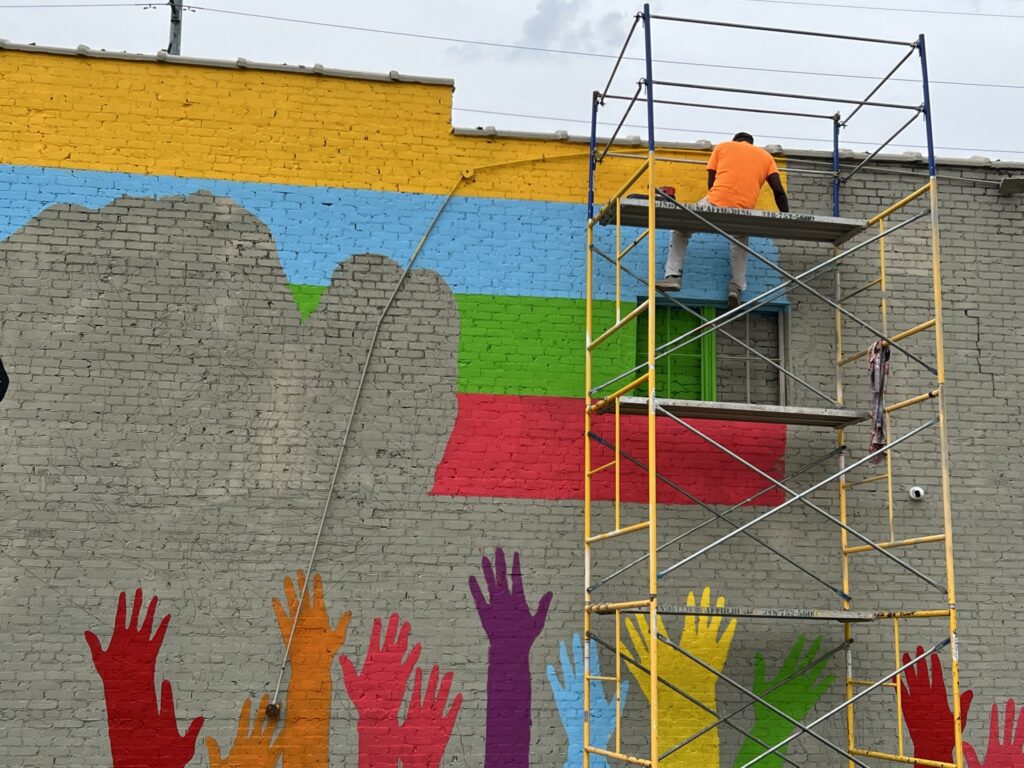
Artist Eric Francis doing his thing.
Ruby Bridges might not have the name recognition of Rosa Parks, but is arguably just as important in the cause of civil rights. At the tender age of 6, Ruby became the first Black student to attend an all white school in the South. Ruby was born in Mississippi in 1954, the year the US Supreme Court ruled in Brown v. the Board of Education, the landmark case that theoretically ended ended racial segregation in public schools. Theoretically because even though segregation was against the law, it was still widely practiced for years after.
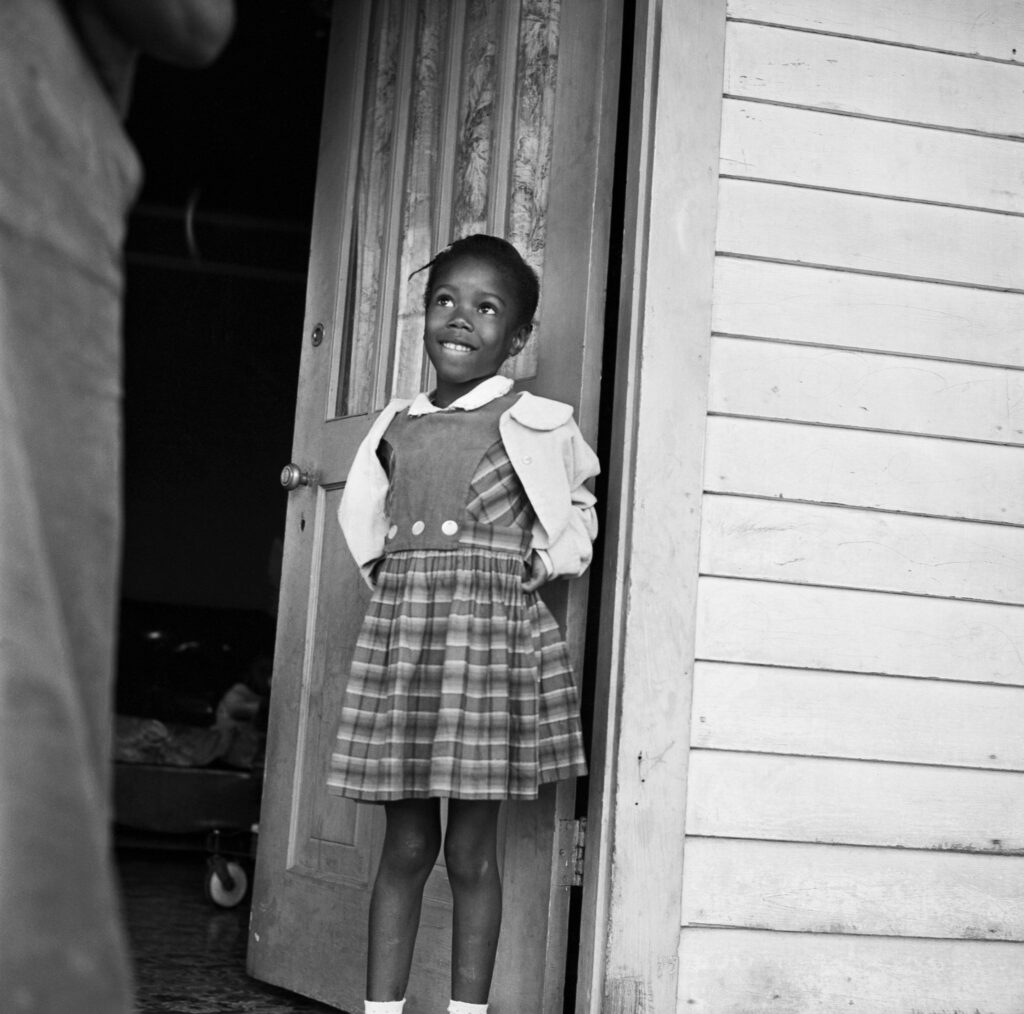
6 year old Ruby Bridges.
Six years later, in 1960, a federal court told Louisiana that it must – once and for all- desegregate. The New Orleans school district did so grudgingly, creating an ‘entrance exam’ to determine if African American children could maintain the academic standards of the white children. By then, Ruby and her parents were living in New Orleans. Ruby had attended a segregated kindergarten, but her Mother Lucille wanted her to have the educational opportunities that she and husband Alon had been denied. Ruby and five other Black students took the New Orleans school entrance test and passed. Eventually, four of the original six would enroll in all-white schools, but while all the children suffered from the chaos and anger this brought down on them and their families, Ruby arguably had it the worst. Three of the children enrolled in a school together, but Bridges alone enrolled in the all-white William Frantz Elementary School, which was closer to her home.

Ruby being escorted to elementary school by Federal Marshals.
That first year is as you would imagine; vicious, hateful, and for a six-year-old, terrifying. Ruby and her mother were escorted by four federal marshals to the school every school day that year. Only one teacher in the school was willing to teach her, and for the year, she was the only student in his class. Ruby ate lunch alone and had no friends to play with at recess, but she did not miss a single day of school that year. Ruby is no longer that ground-breaking 6-year old. As an adult, she founded The Ruby Bridges Foundation with the goal of ending racism and bullying through integration and education, working to overcome the problem one step at a time.
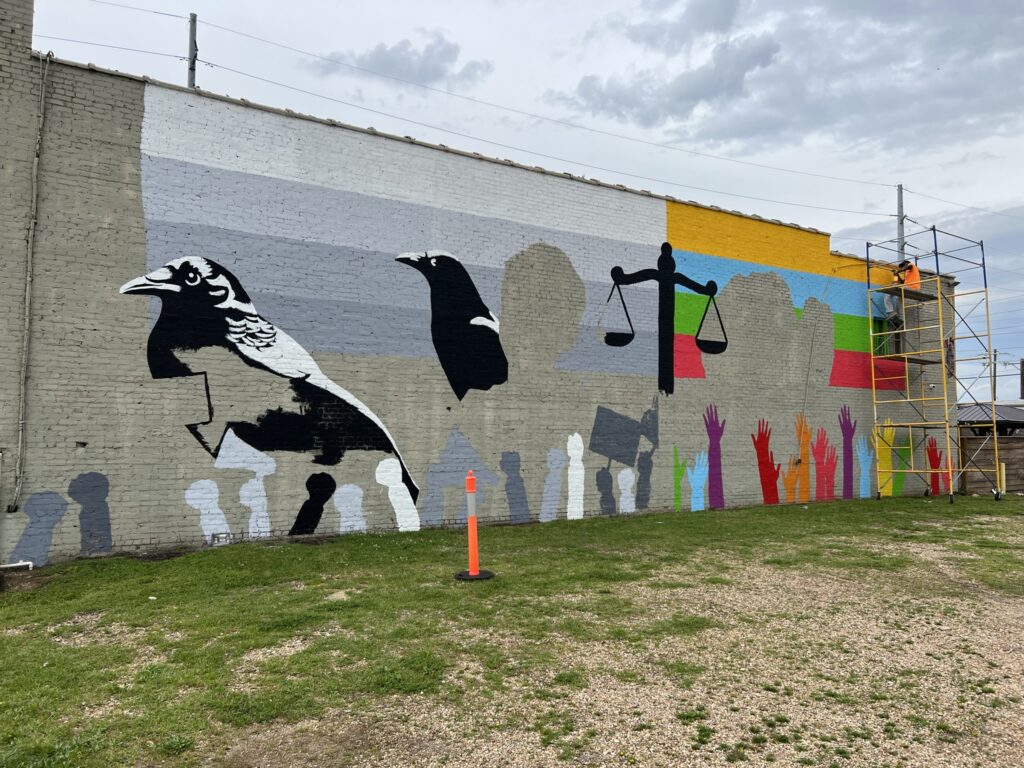
The work in progress in the 1600 block of Marshall Street.
Dr. Cynthia Montgomery commissioned the mural and worked with Francis on its overall theme. Thematic points include the hands of children, as if raised in a classroom. Fists raised, as if in protest. Crows representing the so called ‘Jim Crow’ laws that codified racial segregation from the 1890s until they started being overturned by the courts in the 1950s and 60s. Francis will also paint Bridges as a young child and an older woman.

Local children have been a part of the painting process. The raised hands were painted by youngsters of the Jack and Jill of America, Inc. Red River Chapter. The River, as the local organization is called, is run by local Black mothers with a goal of nurturing children through leadership development, volunteer service, philanthropic giving and civic duty to become future African American leaders.
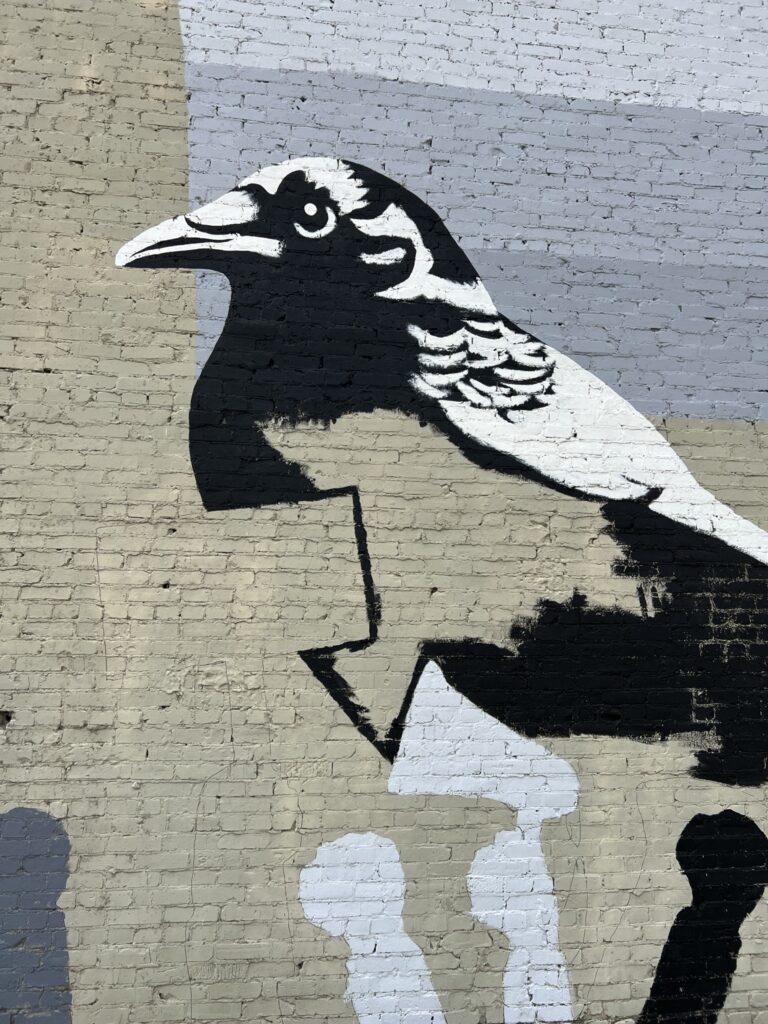
The bird that unfortunately shares a name with Jim Crow. Interestingly, there was no real person involved named Jim Crow. It was a character in a minstrel show, and was used as a racial epithet against Black people.
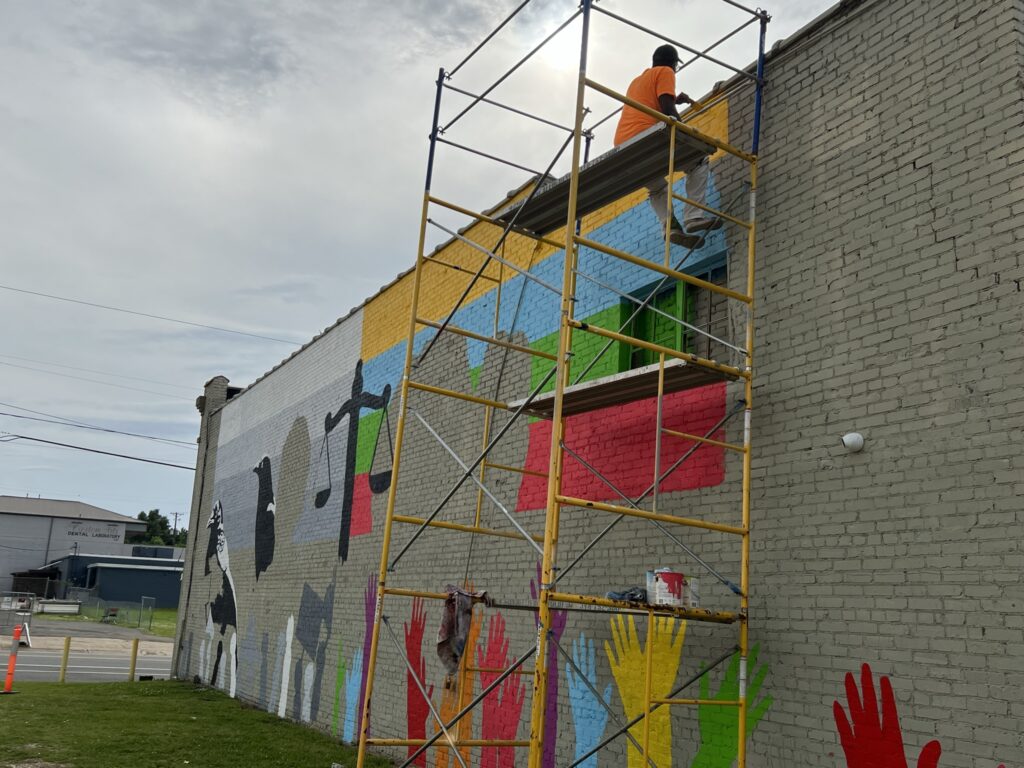
Francis says he biggest challenge at present is the weather, but if he can get in some rain free days, he should be finishing up by the end of April. From Ruby Bridges to the Millennium Mural to John Cush’s Homage to Family, each mural tells a piece of the story of Shreveport. We are happy that more chapters continue to be added.
Read on to see the other murals that make up the Marshall Mural Mile




